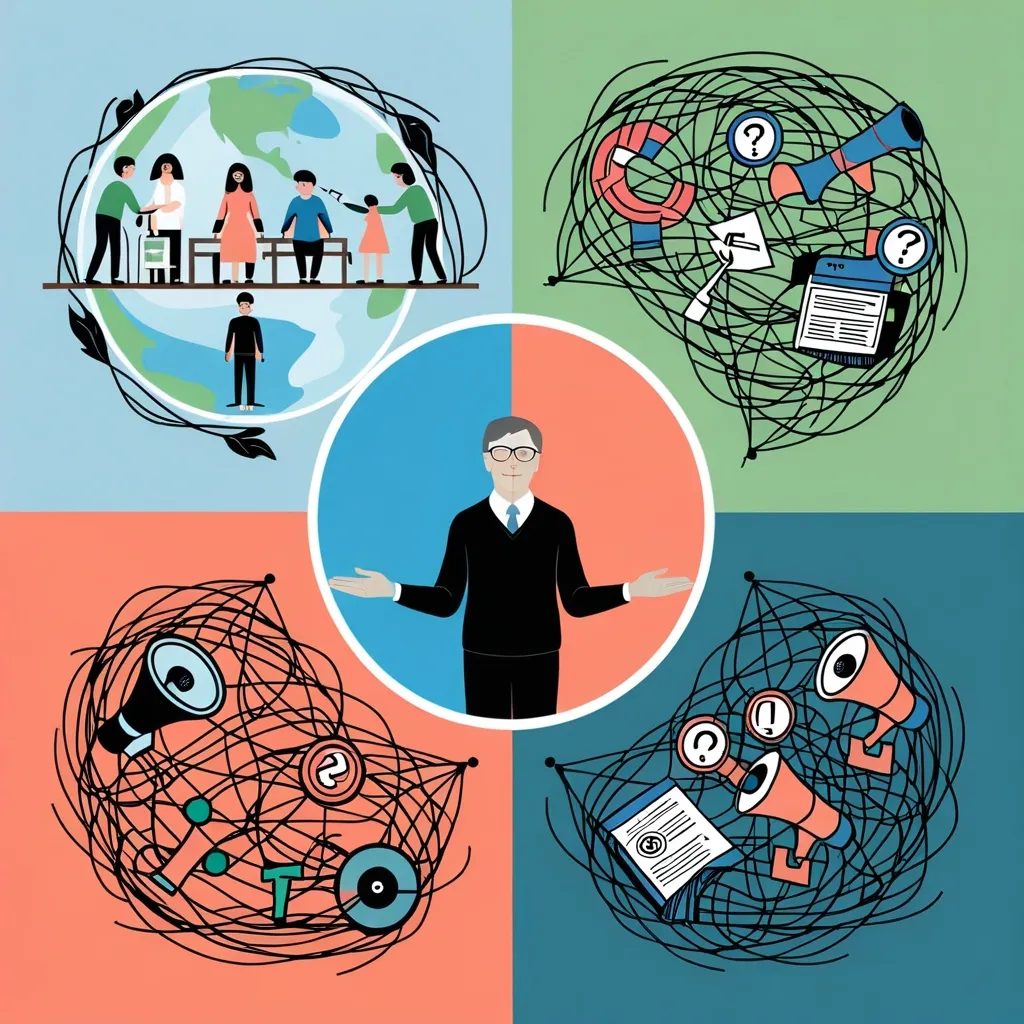Let’s wander back to the cramped Vancouver apartment of John Hutchison in 1979. Picture a space filled with stray wires, home-built Tesla coils buzzing with unpredictable energy, and odd inventions stacked wall-to-wall. Hutchison, an amateur experimenter inspired by Tesla’s electrical adventures, was not aiming to bend reality—yet that’s what he claimed happened. Metal bars, supposedly, floated in mid-air. Objects melted together in ways that should have required thousands of degrees. There were instances, so the story goes, when metals jellified, their structure gone soft, only to regain solidity moments later. If you’d observed this in person, would you think you’d seen a glimpse into a future of anti-gravity—or the world’s best magic trick?
That’s the riddle at the core of what’s called the Hutchison Effect: peculiar physical demonstrations where standard physics seems to break down. “The most beautiful thing we can experience is the mysterious,” wrote Einstein, and the Hutchison Effect certainly delivers on that promise, at least at first glance. The videos alone are mesmerizing—heavy wrenches rising off tables, hunks of aluminum floating, and odd scorch marks appearing from nowhere. But beneath the spectacle is a far deeper—and stranger—story.
I’ve spent years piecing together the fragments around the Hutchison Effect, studying engineering reports, watching grainy tapes, and even talking to physicists who visited Hutchison’s lab. What always strikes me is how divided expert opinion remains. Some engineers and scientists who observed the effect reported events that defied easy explanation, like metals fused at room temperature, without evidence of heating, or alloys altered in a manner inconsistent with any known process. Others, just as credentialed, saw little more than sleight-of-hand. Is it possible for the same room to yield wonders and hoaxes depending on who’s looking?
Here’s a question I always come back to: If Hutchison was simply running a clever hoax, why did so many credible organizations, from the U.S. Army’s technology division to McDonnell Douglas Aerospace, pour resources into his work? There were actual visits, funding, even samples of strange fused metal sent to government labs. At what point does a trick become compelling enough to worry major defense contractors?
Imagine what it must have felt like for a Cold War intelligence officer stumbling upon those videos. The footage of weighty objects drifting upward suggests mastery of gravity—a technology that would change everything from air travel to ballistic defense. The fact that aerospace giants quietly funneled money into further testing only added fuel. What’s real? What’s rumor?
We have official documents, unearthed years later, that hint at budgets for “non-conventional propulsion,” and code names like “Skyvault” and “Glimmer.” But there are no confirmed breakthroughs, just silence and strict non-disclosure agreements. You have to wonder: Was this secrecy to protect a world-altering discovery—or to cover up a wild goose chase that burned through millions?
Here’s another odd detail that stays with me. I’ve spoken to engineers who insist that recreating the Hutchison Effect is nearly impossible, in part because the original equipment was lost or destroyed. Hutchison’s apparatus was always cobbled together from a confusing mix of Tesla coils, Van de Graaff generators, and radio sources, arranged in what looked like chaos. Some suggest this very chaos was essential—that the effect, if real, depended on hard-to-reproduce interactions of electromagnetic fields, and not just on individual machines. Others point out that the most evocative phenomena never occurred under truly rigorous, peer-reviewed conditions. That’s something that should give every would-be believer pause.
Do you ever ask yourself how much of our belief in extraordinary claims comes from wanting the world to be more magical than it seems? The psychology of such phenomena fascinates me almost as much as the physics. The more a phenomenon refuses to be pinned down, the harder people chase it—and the easier it becomes for stories to grow in the retelling.
Even today, some researchers describe seeing brief, unexplainable effects when overlapping powerful electromagnetic fields. But for every tantalizing anomaly, dozens of attempts fail, producing nothing but noise—literally and figuratively.
Hutchison himself began as an eager public demonstrator, but later became withdrawn, claiming harassment and even sabotage by unseen adversaries. Many who try to contact him now get evasive replies, or none at all. “Once you eliminate the impossible, whatever remains, no matter how improbable, must be the truth,” Arthur Conan Doyle wrote. But what if the healthy thing is to leave some possibilities marked undetermined? Especially when so much is at stake.
There’s also the darker possibility that Hutchison wasn’t a discoverer or a hoaxer, but a pawn. During the Reagan era, the U.S. explored ways to confuse and mislead foreign spies—injecting plausible rumors, staged videos, or impossible technical claims that would tie up enemy analysts. Imagine being in charge of counterintelligence: Wouldn’t you want to set traps with “leaks” about antigravity, monitoring who comes sniffing around and how they try to copy your imaginary breakthrough? The line between technological research and strategic illusion can get very blurry.
But I keep returning to the physical samples left behind—pieces of metal with odd internal fractures, fused wood and metal, and metals that seem altered in properties in ways not easily explained. If these are hoaxes, they’re unusually creative; if they’re not, they hint at unknown territory in physics. Which is it? The answer, even after decades, isn’t clear.
Have you noticed how the story never quite dies? Every few years, someone posts a new video or claims a replication, then debate erupts again. No one can kill the myth because, perhaps, myths are what draw us to science in the first place—the hope that somewhere, right now, the rules are being rewritten by someone in a cluttered workshop, using tools just beyond our reach.
“Any sufficiently advanced technology is indistinguishable from magic.” Arthur C. Clarke’s words ring true here. But perhaps the opposite is also true: In an age of misinformation and technical spectacle, good magic can be made to look like technology.
So where does that leave us, decades after the first floating cannonballs? The Hutchison Effect sits at the crossroads of belief, science, and secrecy. Whether accidental antigravity, a lucky stumble onto new physics, or a case study in Cold War subterfuge, it keeps me—like many others—looking for a missing piece. Would you wager that the next wild experiment will finally reveal a clue, or is the mystery itself the enduring legacy?
It’s a story that refuses to settle. The tale of a man, a room filled with electrical chaos, and a controversy that will not fade. “There are more things in heaven and earth, Horatio, than are dreamt of in your philosophy.” Was Hutchison a pioneer, a prankster, or a pawn? I find myself less interested in the answer than in the thrill of the question itself. Do you?






